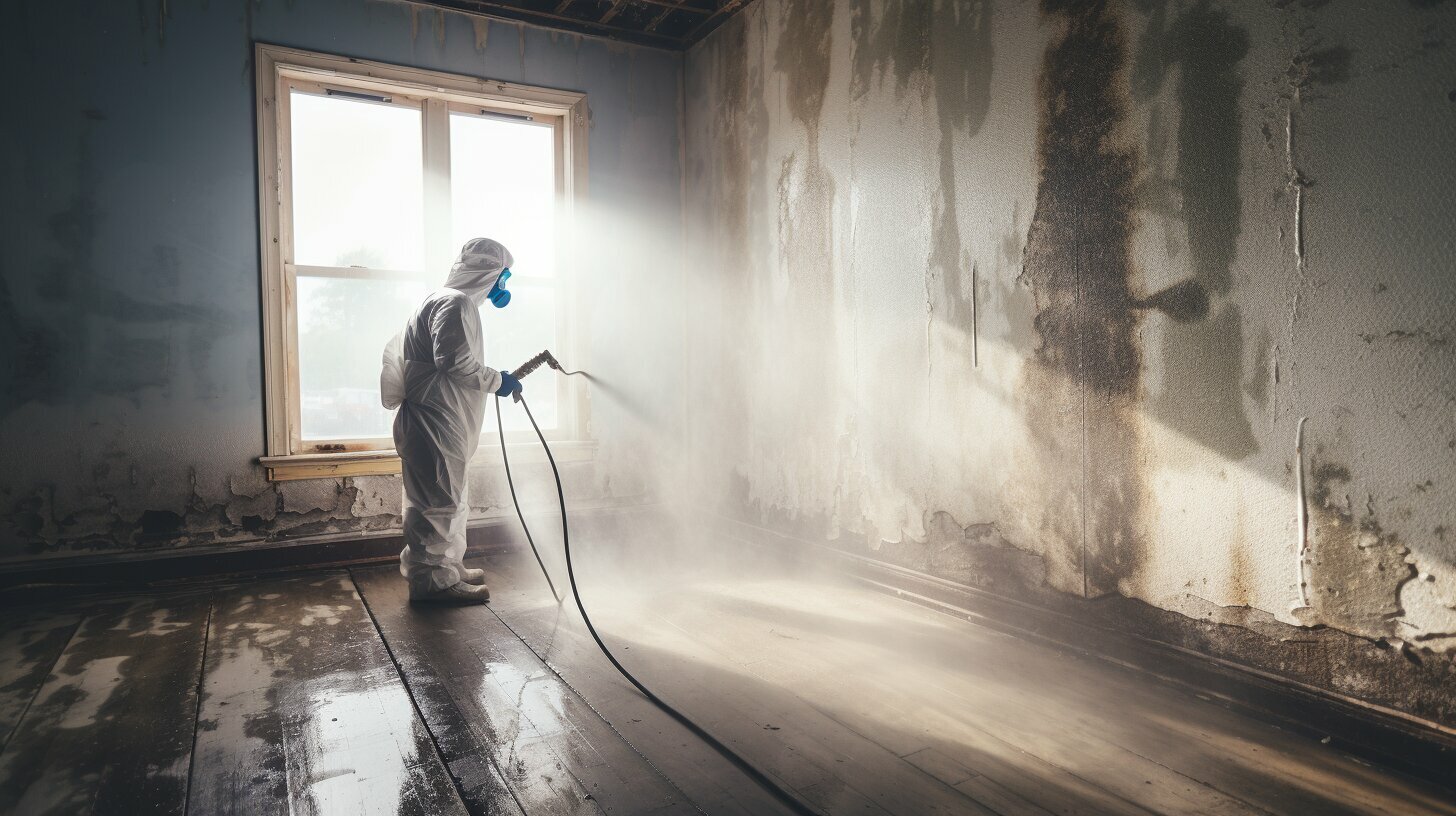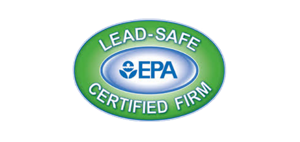After a flood, it is crucial to properly spray and treat your walls to prevent mold growth and further damage. Cleaning and restoring walls after flooding is a multi-step process that involves removing dirt and debris, disinfecting, and protecting against termites and decay fungi. Taking prompt action and following proper procedures will help ensure the long-term restoration of your walls.
Key Takeaways:
- Clean walls with a detergent solution to remove dirt and debris.
- Disinfect walls using caution with bleach, as it can be corrosive.
- Spray wall cavities and other areas with a borate solution to protect against termites and decay fungi.
- Allow materials to dry before applying coatings or treatments that could impede the drying process.
- Check for and address any termite damage and infestation.
When hiring professionals for remediation and treatments, ensure they have the appropriate credentials and experience. Remove mold by cleaning it away rather than just killing it, and accelerate the drying process with dehumidifiers and fans. Use a professional-grade moisture meter to determine when flooded materials are dry enough to restore. Repair damaged wallboard, plaster, or paneling, and patch any cracks or holes. Clean and dry the floors and replace or repair if necessary. By following these steps and precautions, you can effectively clean and restore your walls after a flood.
Wall Cleaning and Restoration Techniques
Proper wall cleaning and restoration techniques are vital after a flood to ensure the elimination of mold, protect against termites, and restore the walls to their pre-flood condition. Once the area has been properly cleaned and dried, it is important to follow a step-by-step process to effectively restore the walls.
- Cleaning the walls: Start by cleaning the walls with a detergent solution to remove any dirt and debris. Scrub gently using a soft brush or sponge, paying special attention to corners and crevices. Rinse the walls thoroughly with clean water to remove any residue.
- Disinfection: After cleaning, it is crucial to disinfect the walls to kill any bacteria or mold that may be present. Choose a disinfectant suitable for the type of walls, such as bleach or hydrogen peroxide. Dilute the disinfectant according to the instructions and apply it generously to the walls, making sure to cover all affected areas.
- Protection against termites: To protect against termites and decay fungi, spray wall cavities, subfloors, and other areas with a borate solution. Borate is a safe and effective treatment that creates a barrier against future termite infestations. Let the borate solution dry before proceeding to the next step.
- Drying and restoration: Allow the walls to dry completely before applying any coatings or treatments that could impede the drying process. Use dehumidifiers and fans to accelerate the drying process. A professional-grade moisture meter can be used to determine when the walls are dry enough for restoration. Once dry, damaged wallboard, plaster, or paneling should be replaced, and any cracks or holes should be patched. The floors should also be cleaned, dried, and if necessary, repaired or replaced.
When it comes to dealing with mold, it is important to note that simply killing the mold is not sufficient. The mold should be physically removed to prevent further growth and potential health risks. Additionally, hiring professionals for remediation and treatments can ensure that the job is done correctly and efficiently. Make sure to check their credentials and experience before engaging their services.
By following these wall cleaning and restoration techniques, you can minimize the damage caused by flooding and restore your walls to their original condition.
Conclusion
In conclusion, taking immediate action, following proper cleaning and restoration techniques, and seeking professional assistance are crucial for effectively restoring walls after flooding and preventing long-term damage.
After flooding, it is necessary to promptly remove floorings, open walls, and discard wet insulation. Once the area is clean and dry, there are several steps to take to restore the walls. First, it is important to clean the walls with a detergent solution to remove any dirt and debris. Disinfectants can then be used to kill any bacteria or mold that may be present. Bleach can be used as a disinfectant, but it should be used with caution as it can be corrosive and pose hazards to people.
It is also important to spray wall cavities, subfloors, and other areas with a borate solution to protect against termites and decay fungi. However, it is best to let the materials dry before applying any coatings or treatments that could impede the drying process. It is also important to check for and address any termite damage and infestation.
When it comes to hiring professionals for remediation and treatments, it is important to check their credentials and experience. Mold should be removed by cleaning it away rather than just killing it, and the drying process should be accelerated by using dehumidifiers and fans. To know when it is dry enough to restore, a professional-grade moisture meter should be used to measure the moisture content of flooded materials.
Finally, after the walls are dry, they can be repaired by replacing damaged wallboard, plaster, or paneling, and patching any cracks or holes. The floors should also be cleaned and dried, and if necessary, replaced or repaired. Overall, it is important to follow proper procedures and take necessary precautions when cleaning and restoring walls after flooding.
FAQ
What should I spray on walls after flooding?
After flooding, it is important to clean the walls with a detergent solution to remove dirt and debris. Disinfectants can then be used to kill any bacteria or mold present. It is also recommended to spray wall cavities, subfloors, and other areas with a borate solution to protect against termites and decay fungi.
Should I use bleach as a disinfectant on walls after flooding?
While bleach can be used as a disinfectant, it should be used with caution as it can be corrosive and pose hazards to people. It is important to follow proper safety guidelines and instructions when using bleach. Alternatively, there are other disinfectants available that can effectively kill bacteria and mold without the potential risks associated with bleach.
How can I accelerate the drying process of walls after flooding?
To accelerate the drying process, it is recommended to use dehumidifiers and fans. These appliances help remove excess moisture from the air and walls, aiding in the drying process. Additionally, using a professional-grade moisture meter to measure the moisture content of flooded materials can help determine when they are dry enough to proceed with restoration.
When can I restore walls after flooding?
It is best to let the materials dry completely before applying any coatings or treatments that could impede the drying process. Using a moisture meter to measure the moisture content of flooded materials can help determine when they are dry enough for restoration. Once the walls are dry, damaged wallboard, plaster, or paneling can be replaced, cracks or holes can be patched, and the walls can be repaired as necessary.
What precautions should I take when hiring professionals for wall restoration after flooding?
When hiring professionals for remediation and treatments, it is important to check their credentials and experience. Ensure that they have expertise in dealing with water damage and mold remediation. It is also important to ask for references and inquire about their previous work. Hiring qualified professionals can ensure proper restoration and minimize the risk of further damage or mold growth.









